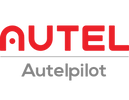Drone technology has brought many benefits to the bridge inspection industry. It offers greater maneuverability, saves time and labor costs, and most importantly, significantly reduces the risks associated with traditional manual inspections.
However, drone bridge inspections pose legal and privacy challenges. Let's focus on how drone pilots can avoid these issues.
Beyond Visual Line of Sight (BVLOS) Operations
Drone aerial inspections allow bridges to be inspected without closing them to traffic. However, due to the complexity of bridge structures, drones are not always within the pilot's line of sight, meaning that most drone operations fall within BVLOS.
For BVLOS drone operations, the following provisions apply under FAA Parts 107 and 108:
Commercial operations require Part 107 certification (including VLOS maintenance and a 400-foot altitude limit), while bridge inspections often require a BVLOS exemption.
Drone equipment must comply with Remote ID requirements for tracking.
Flights under bridges should be monitored for GPS interference and local restrictions (such as no-fly zones in cities).
Drone Insurance
When operating drones commercially, pilots should be aware of insurance requirements and risk management. Drone bridge inspections carry a high risk, and some US states even mandate commercial drone insurance.
This is because when drones fly over bridges and vehicles, interference from walls, rebar, and metal can affect the stability of the drone's connection, making collisions and falls more likely. Therefore, it's crucial for bridge inspection drones to be resistant to interference and have commercial insurance.
Drone Illegal Trespassing
Drone inspections of critical infrastructure, such as bridges, capture photos and videos, potentially capturing vehicles along the way. If these images are used in public, be sure to blur identifying features such as license plates and occupants.
How are drone bridge inspection solutions used?
Drone bridge inspection solutions easily capture 2D and 3D images, including thermal imaging, for automated, high-precision inspections of complex bridge structures. This makes everything from bridge construction to maintenance easier and more convenient. Drones can even be used to manage traffic on bridges and maintain traffic conditions.
If you're still searching for the best drone bridge patrol and inspection solution, check out Autel's commercial drone line. Pre-order your first high-performance drone and our customized drone bridge patrol and inspection solution now at autelpilot.com—we look forward to hearing from you!
FAQ
How are drones used for bridge inspections?
High-definition commercial drones can capture high-quality images and panoramic videos of bridge structures, and thermal imaging can reveal structural risks that are not easily visible to the naked eye. This adds depth and dimension to traditional inspections.
How are drones changing bridge inspections?
Drones are making bridge inspections more efficient and safer. An Autel EVO MAX 4T V2 drone can zoom in on key issues from a distance, capturing high-resolution images and enhancing accessibility without risking inspectors.
The EVO MAX 4T V2 drone boasts a flight time of up to 42 minutes per flight, and its replaceable, self-heating battery allows for quick relay operations, shortening inspection times and significantly saving costs.
Can drones be used for bridge inspections?
Absolutely—drones are ideal for bridge, road, and building inspections. They provide a bird's-eye view of entrances and exits, traffic flow, and nearby infrastructure, enhancing safety and conducting comprehensive inspections through remote, detailed data collection.
Do inspectors need a license to fly drones?
Yes, in the United States, drone pilots must hold Part 107 certification from the Federal Aviation Administration (FAA) to fly drones for commercial purposes. This ensures safety, compliance, and professionalism during aerial photography.







